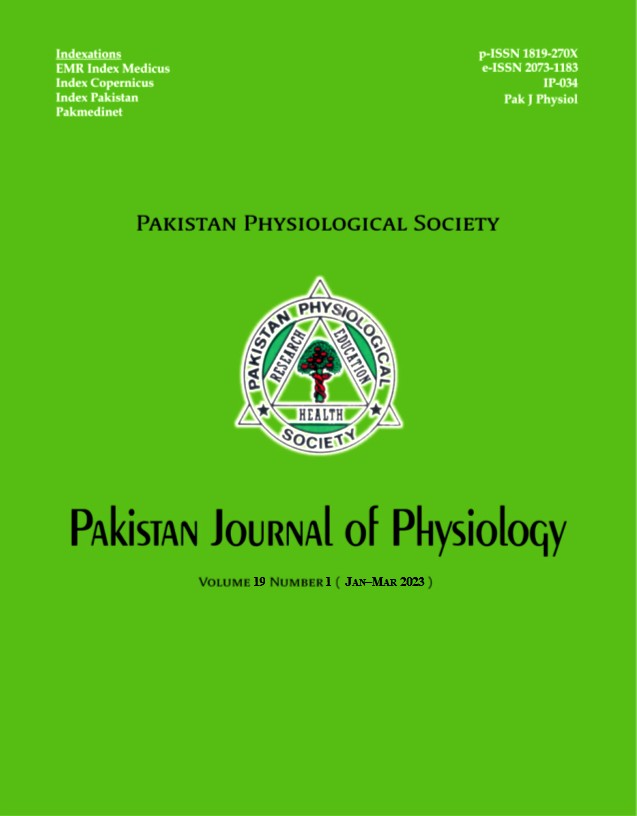PLASMA ADIPONECTIN LEVELS IN OBSTRUCTIVE SLEEP APNEA: A CROSS SECTION STUDY
DOI:
https://doi.org/10.69656/pjp.v19i1.1505Keywords:
Obstructive sleep apnea (OSA), Biomarker, Adiponectin, Sleep-related breathing disorderAbstract
Background: Obstructive sleep apnea (OSA) is a disorder of airway obstruction during sleep with multisystem implications and associated complications, while mostly underdiagnosed and undertreated. It has drawn more attention in recent years with a substantial increase in its prevalence. Studies reported inconclusive results for the association of adiponectin with OSA as a reliable biomarker. The present study aimed to evaluate this association. Methods: A total of 88 participants, including 44 apnea subjects and 44 controls, fulfilling the inclusion and exclusion criteria, were selected for this cross-sectional study ?performed from Dec 2018 to Jan 2020. Apnea subjects were selected after confirmation of their OSA by overnight polysomnography, and classified into mild, moderate, and severe OSA groups based on their Apnea-Hypopnea Index (AHI). Blood samples were collected in EDTA-containing tubes and Enzyme-link immune-sorbent assay (ELISA) was done for plasma levels of adiponectin. SPSS-20 was used for analysis of the data. Results: Mean adiponectin level was significantly higher in controls as it was 9.16±3.54 µg/ml for controls and 3.47±2.03 µg/ml for OSA. Comparison between different OSA sub-group revealed mean adiponectin as 3.99±1.69, 2.73±1.65, and 3.64±2.30 µg/ml in mild, moderate, and severe OSA groups respectively. Conclusion: Lower plasma adiponectin levels ?were identified among OSA subjects as compared to controls. Lower levels of adiponectin are associated with the presence of OSA and could be helpful to identify subjects who are at risk for OSA-related comorbidities.
Pak J Physiol 2023;19(1):17–20
Downloads
Downloads
Published
How to Cite
Issue
Section
License
The author(s) retain the copyrights and allow their publication in Pakistan Journal of Physiology, Pak J Physiol, PJP to be FREE for research and academic purposes. It can be downloaded and stored, printed, presented, projected, cited and quoted with full reference of, and acknowledgement to the author(s) and the PJP. The contents are published with an international CC-BY-ND-4.0 License.











